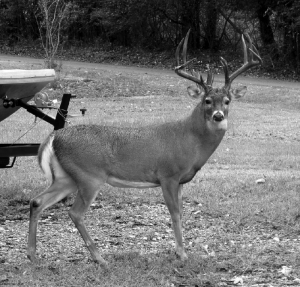
On the morning of Nov. 23, 1959, Levi P. Yates, a 38-year-old park caretaker, made his way to the deer pen of the Volunteer Park Zoo in Pasco, Wash. The public recreation area was situated on seven acres of community land and also housed a peacock enclosure.
Through a tubular frame gate Yates entered the deer pen intending to feed the white-tailed buck that occupied the space. The enclosure measured 40 feet by 55 feet and it was surrounded by a 7-foot-high, heavy, chain-link fence. The space contained a feed shed in one of the far corners and a deer shelter in the other. In the middle of the pen, there was a salt block and wooden rubbing pole for the deer’s use.
Initially, the animal seemed disinterested in Yates’ entrance and the caretaker meandered toward the feed shed unacknowledged. However, as he set the bucket on the ground and went to open the shed, he experienced an ominous feeling of imminent attack, he told Hero Fund Case Investigator H.W. Eyman.
Three weeks prior, the buck, who had showed signs of viciousness brought on by the start of mating season, fatally gored a doe with its antlers.
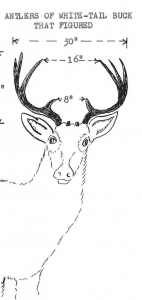
When Yates whipped around he was confronted by the buck, its head lowered, charging toward him. The deer loomed 6-feet-tall including its antlers, and it weighed approximately 240 pounds. Its antlers, honed to powerful sharpness, extended upward and outward from its head, then curved inward and diverged into three main tines. In addition, there were two shorter, stouter points at the base of its antlers that extended upward and inward.
With no time to change his course, Yates readied himself, hoping to grasp the buck’s antlers and divert them on impact. However, the aggressive beast proved too strong, and forced its left tine into Yates’ right knee, issuing it upward beneath his kneecap, while simultaneously thrusting the right tine into Yates’ groin.
“Help!” Yates yelled in pain as the deer pinned him against the shed.
His efforts to wrestle against the offshoots of the buck’s antlers and twist its head away proved fruitless and only enraged the animal further.
The beast rattled its head in retaliation and pushed Yates to the ground where he lay vulnerable.
Meanwhile, James E. Simpson, pastor of the Pasco Presbyterian Church, was driving by Volunteer Park on North Third Avenue after having dropped his daughter off at the local junior high school. He saw the buck’s initial charge and stopped his car. Simpson raced toward the enclosure as the buck pinned Yates in the spread of its antlers.
“How do I get in?!” Simpson asked.
“There’s a gate in the corner!” Yates managed to get out as he gripped the buck’s antlers, attempting to force them upward.
As Simpson went to the gate, another man, Joseph J. Kauer, who had also dropped his daughter off at school, heard cries for help and stopped at the scene.
Meanwhile, Simpson had reached the gate and noticed blood on the ground around Yates.
He was fearful for Yates’ life and told the Hero Fund investigator that he was determined to enter the pen and wrestle the buck away from the injured man.
At that point, Kauer was emerging from his car.
Simpson was outfitted in woolen trousers, a cotton shirt, and a zipped-up Air Force jacket. He was familiar with the scene and had observed the deer at times when it was docile, but had no experience handling violent animals.
He had also read of the buck’s violent goring of a doe a few weeks prior.
“Hit it with something!” Yates cried out as Simpson entered the enclosure.
Simpson, noting the salt block in the center of the enclosure, picked it up and moved to the side of the buck’s lowered head. Holding the block at one end firmly, with both hands, he drove the opposite end down on the animal’s skull behind the antler beams.
Regrettably, the blow failed to stun the buck as Simpson had hoped. Instead, the animal swung its head sharply upward and staggered away from Yates, who crawled toward the feed shed. The buck then charged at Simpson with its head lowered. The deer’s sharp tines ripped through Simpson’s jacket and into his abdomen.
Simpson grasped the antlers on his right and left side. Snorting and pawing, the enraged buck jerked his head, encircling Simpson with his antlers, and driving him into the fence. Fearing another blow to the abdomen, Simpson held to the offshoots and twisted himself away from the fence, but lost his footing and fell to the ground. The buck’s antlers moved downward with his fall and he was imprisoned within the tines once again.
By now, Simpson’s trousers were tattered shreds and the buck stood ominously above him. Yates was leaning against the fence, struggling to his feet, and Kauer had just reached the gate to the pen.
Without hesitation, Kauer raced toward the buck, grasped the buck’s tines, and tried unsuccessfully to pull its head upward and away from Simpson.
Then, Yates hobbled over and grasped the other side of the buck’s tines. Between him and Kauer, they were able to raise the buck’s head slightly. In response, the animal rebelled, jerking its head upward to free its antlers from their grasp, which gave Simpson time to roll away and rise to his feet.
With Kauer and Yates still positioned on either side of the buck, Simpson gained hold of the main beams of the deer’s antlers. As each man retained his two-handed hold on the buck, Kauer proposed they turn the beast’s head in one direction to weaken it.
Kauer gestured and the three men forced their collective grip in the northwest direction. As they shifted the buck’s head, the animal retained its footing by moving its hind legs to follow the course led by the trio’s shifting grasp.
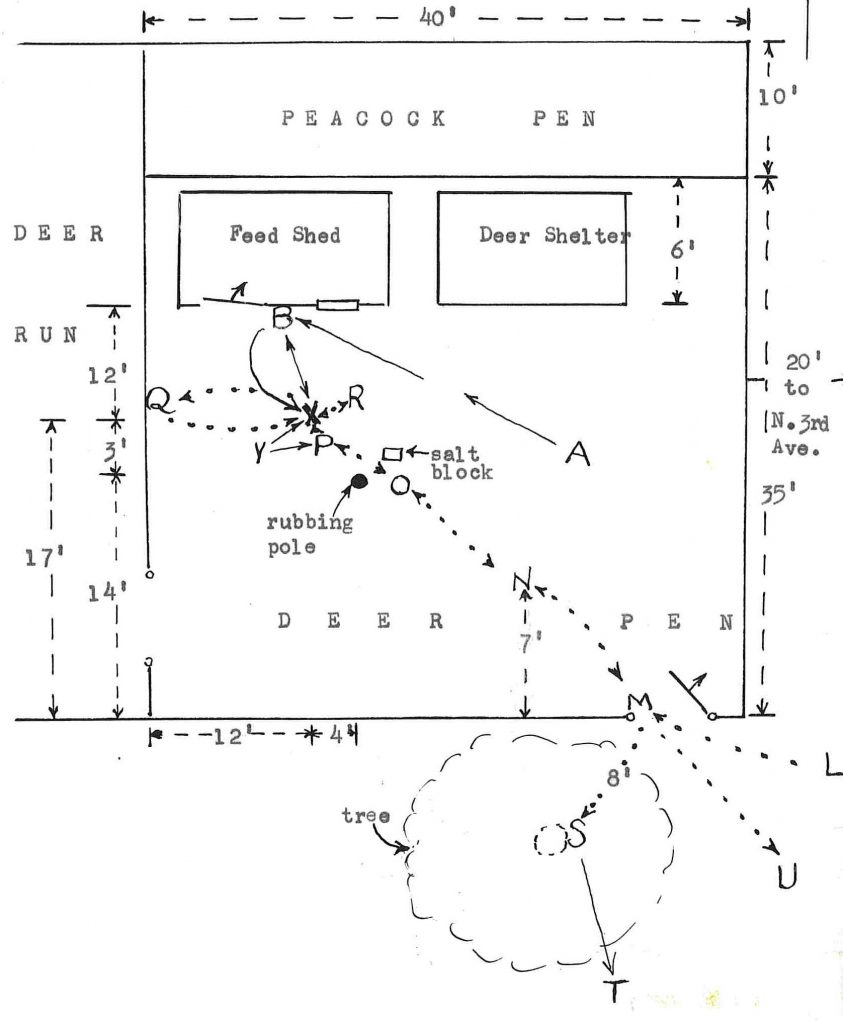
The men and the buck had reached a stalemate when Kauer offered his next idea: to work the animal close enough to the gate so they could release their hold and flee from the pen.
With great difficulty, they wrestled the resistant buck and, in short gains, moved it to a point about 10 feet from the opening.
Nearly exhausted and breathing heavily from their strenuous efforts, Kauer proposed they release the buck’s antlers simultaneously and make a run for the gate.
Before Kauer gave the signal, Simpson removed part of his tattered, fouled jacket sleeve that was caught on one of the antler spikes.
He freed it and, at Kauer’s call, the men released their shared hold on the buck’s antlers and raced toward the gate.
The furious buck immediately pursued its captors. The deer directed its charge at Simpson, encircling him at the waist with his antlers, and driving him against the trunk of an elm tree outside the gate of the pen.
Abruptly, the buck then backed away from Simpson and began peacefully grazing on the park lawn—the violent struggle was over.
“Are you alright?” Kauer and Yates inquired worriedly of Simpson. The former two had safely exited the enclosure while Simpson was being thrust against the elm tree.
Kauer ran to Simpson who indicated he had not been gored, but that most of his body felt sore.
Meanwhile, Yates was bleeding badly from his knee injury. He hobbled over to an administration building on the park’s grounds and reported the accident before being taken to the hospital by truck.
As Simpson went to his automobile to drive himself to the hospital, Kauer, fearing the enraged buck would attack school children, raced into North Third Avenue and asked the driver of a passing vehicle to notify police.
Kauer then got in his car and drove to the East edge of the park, intending to herd the deer away from any children who might enter the area. Guided by Kauer’s automobile, the buck moved calmly in the southwest direction before stepping into Third Avenue.
Police arrived and, standing in the bed of a truck, lassoed the deer. A veterinarian tranquilized the deer and performed an operation rendering the buck impotent.
When the buck returned to Volunteer Park, it led a much more docile life.
At the hospital, Yates needed two stitches to close his groin injury and 12 stitches for his wounded knee. He was discharged and spent nearly two months recuperating at home before he could return to work. During the investigation, Yates informed investigator Eyman that he experienced persistent back and knee pain.
Simpson was examined at the hospital and it was discovered he had superficial lacerations on his left upper arm and right hip. He also had scratches on his upper thighs. He experienced soreness for six weeks and remained black and blue with bruises for several weeks.
Kauer escaped the incident with no injuries.
Simpson and Kauer were each awarded the bronze medal and $500 for rescuing Yates from the enraged buck.
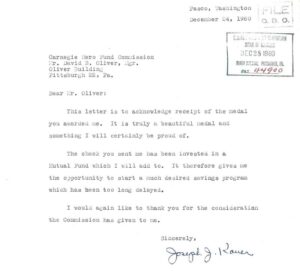
In his report, Eyman noted Simpson intended to use the financial award as a down payment on a new home.
Kauer worked for the U.S. Atomic Energy Commission as a pipefitter-welder. He lived with his wife Mary and six children in Pasco, Wash.
Hero Fund files indicate Kauer invested his award money in a mutual fund.
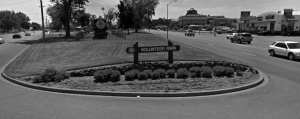
Volunteer Park is situated on seven acres of community land. Today the space is home to a playground, walking trail, picnic areas, meditation garden, and historic train engine.
— Abby Brady, operations and outreach assistant/archivist

